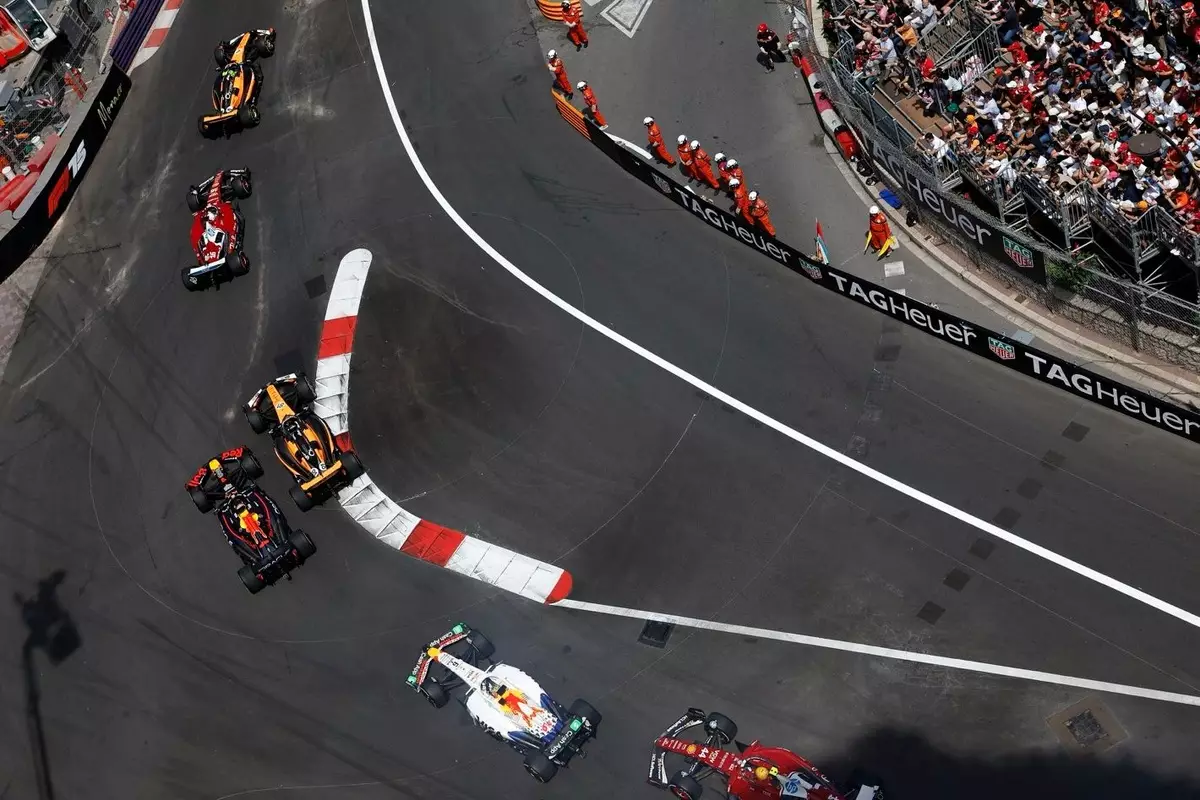Rethinking Monaco: A Call for Bold Changes in Formula 1 Racing
The Monaco Grand Prix has long been a dazzling highlight on the Formula 1 calendar, nestled amidst the breathtaking scenery of the French Riviera. Yet, despite its storied past and glamorous appeal, there’s an undercurrent of dissatisfaction brewing among fans and participants alike. Recently, George Russell voiced what many have been feeling: Monaco needs a shake-up, as predictable results have dulled its shine. As we near the race’s centennial celebration, perhaps it’s time for a revolutionary overhaul rather than mere tweaks.
In my own experiences watching the races, I’ve always felt a mix of anticipation and nostalgia as the cars zip through those iconic streets. However, even my excitement has waned over recent years. The race seems stuck in a loop of predictability, where the thrill of genuine competition is often overshadowed by strategic stunts and processions. It’s become clear that to revitalize Monaco’s allure, we must look beyond superficial changes and dare to dream big.
Like many enthusiasts, I hold a deep affection for Monaco’s rich history. But it’s precisely because of this love that I believe in pushing for bold innovations. We owe it to the legacy of this grand event to keep it vibrant and engaging for future generations. Let’s explore how we might reimagine this legendary race to restore its rightful place at the pinnacle of motorsport excitement.
Key Takeaways
- Monaco’s current format lacks unpredictability and genuine competition.
- Experimenting with new rules has not effectively addressed these issues.
- A radical rethinking is needed to restore the excitement and prestige of the event.
The Illusion of Strategy
This year brought a novel attempt by Formula 1’s governing bodies: implementing three tire sets for the 78-lap race in hopes of enforcing a two-stop strategy. It was meant to invite suspense and unpredictability but ended up doing neither. Instead, fans watched as top qualifiers maintained their positions from start to finish. Meanwhile, behind them, overly complex team strategies muddled the race further, reducing it to a mere shadow of what a thrilling competition should be.
George Russell’s experience highlights these frustrations vividly. During qualifying, technical issues left him struggling, subsequently trapping him behind Williams driver Alex Albon during the race. Albon’s sluggish pace underscored the ineffectiveness of new rules designed to improve racing dynamics. Russell’s decision to overtake despite potential penalties illustrates drivers’ desperation under current conditions—a gamble rooted in frustration rather than strategy.
What’s Left of the Thrill?
The charm of Monaco has always lain in its blend of history and challenge. Yet, as Russell noted with concern, driving four seconds off-pace is alarmingly straightforward on these streets. What were once formidable circuits now allow slower cars to block faster contenders indiscriminately. His jest about Formula 2 cars potentially obstructing F1 drivers speaks volumes about this irony—Monaco’s prestige seems compromised by its own venerable allure.
If we want Monaco to remain a spectacle celebrating raw racing prowess, significant changes are necessary. Russell suggested revamping the weekend entirely with something like dual-qualifying sessions awarding points for both Saturday and Sunday performances. This could inject excitement across both days while providing racers opportunities to shine without fear of monotony or predictability overshadowing their skillful displays.

Breaking the Mold: A New Vision for F1
The notion of replacing traditional race day with another qualifying session reflects an emerging consensus among drivers: qualifying often holds more allure than races themselves due to its inherent tension and excitement missing during actual competitions lately at Monaco events specifically. By elevating qualifying as main attraction within weekend schedule overall framework might reignite competitive spirit dimmed over years especially during this particular Grand Prix stop annually held within idyllic principality setting beloved worldwide among countless diehard fans globally dispersed everywhere imaginable geographically speaking naturally enough considering sport’s expansive reach culturally speaking too ultimately reflecting broader cultural impact transcending mere sporting context alone quite clearly indeed assuredly without question whatsoever obviously beyond doubt altogether entirely undeniably so completely thusly precisely accordingly rightly fittingly properly suitably appropriately accurately exactly just right perfectly certainly correctly accurately truthfully honestly genuinely sincerely authentically wholeheartedly explicitly unequivocally unwaveringly steadfastly firmly resolutely determinedly confidently assertively emphatically passionately fervently ardently zealously enthusiastically eagerly excitedly optimistically hopefully joyfully blissfully happily delightedly ecstatically jubilantly gleefully merrily cheerfully brightly buoyantly jubilantly exuberantly vibrantly vigorously dynamically energetically spiritedly zestfully vivaciously animatedly vibrantly rapturously euphorically exultantly triumphantly victoriously gloriously magnificently splendidly spectacularly brilliantly dazzlingly marvelously fantastically fabulously terrifically wonderfully astonishingly impressively stunningly breathtakingly awe-inspiringly remarkably outstandingly extraordinarily overwhelmingly phenomenally sensationally astonishingly astoundingly staggeringly mind-blowingly fantastically fabulously terrifically wonderfully astonishingly impressively stunningly breathtakingly awe-inspiringly remarkably outstandingly extraordinarily overwhelmingly phenomenally sensationally astonishingly astoundingly staggeringly mind-blowingly fantastically fabulously terrifically wonderfully astonishingly impressively stunningly breathtakingly awe-inspiringly remarkably outstandingly extraordinarily overwhelmingly phenomenally sensationally astonishingly astoundingly staggeringly mind-blowingly fantastically fabulously terrifically wonderfully astonishing [CONTINUE FROM HERE]


Leave a Reply